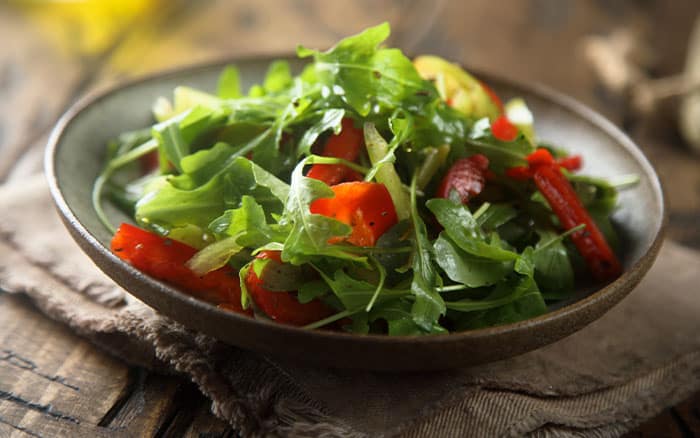Successful succession crops can be a real godsend. For me, it’s especially useful for salad crops, which we use every day in our sandwiches, kid’s lunches, and side salads.
Why do we eat salad?
A pre-meal salad was adopted by the ancient Greeks and then Romans. Of course, only the wealthiest could afford vegetables, with poorer families occasionally consuming dried vegetables. Crops like celery would have originally been grown for colds, flu, and arthritis and Parsley to prevent drunkenness.

Nowadays, salad is highly available for all to eat. We pick up our salad crops from the supermarket without much thought to how it got there. Today, China is the main producer of spinach, representing 90% of production. But you can grow some in your back garden and it’s worth it.
Spinach contains large amounts of iron, great for the blood, and home harvests are thought to be even more nutrient-packed. This is because the time it takes to reach your plate after picking is minimal.
This quick cool-season crop is a great alternative to lettuce when the weather cools and can be harvested year-round, depending on the variety. In the summer, they can be used as a great catch crop—baby leaf varieties are ready to harvest in as little as 21 days!
What are ‘salad crops’?
A lot of our summer harvests are going to be what we call “salad” crops. Typically, these are leafy vegetables that are harvested specifically for their leaf. But nowadays, it loosely translates to crops used to embellish salads too, such as tomatoes and cucumbers. After all, what use is a leafy bed of greens without the crunch of cucumber or tang of tomato alongside?
Timing all three for harvest together might seem daunting but can be managed so your salad grows at the right time.
And once you get these three under your belt, there is a whole host of other ingredients to grow and try at home.
There’s chicory, Bok choy, and even raw broccoli goes well in a salad.
And I have to say, I love growing blueberries to add to my salads too. So, you can get creative with what you put on your plate.
Did you know
In the summer, households eat on average 50% more fresh fruit and veg than the annual average.
How to plan your salad crop planting
Start with the top three – tomatoes, cucumber, and lettuce. Here’s a simple breakdown of how you might go about planting for harvest at the same time.
You’ll be happy to know that growing tomatoes and cucumbers together is fairly easy as the two are companion plants. Cucumber vines will quite happily grow along the ground between tomato plants. Or you can trellis them upward using the same supports for your tomatoes.

Though both are warm-season crops, cucumbers require up to 70 days to reach maturity.
Whilst tomatoes can take up to 105 days, depending on the variety. Pick your tomato variety and begin sowing them accordingly.
For the most part, you will be sowing both in April, planting out in June and harvesting from July onwards. Lettuce is the simpler of the three because it falls into a ‘cut and come again’ category.
Meaning, once it’s ready to harvest, you take a few leaves and these regrow so you can get multiple harvests from one plant.
How to guarantee successful succession planting
Of course, the easiest way to endless harvests is succession planting. One of the main advantages is that it can really extend the growing season, and leafy salad crops are made for it. Successive cropping will also help to maximize space, help maintain a continuous supply and optimise your yield.
What is succession planting?
Firstly, don’t confuse succession planting with staggered planting. This is where you stage sowing your seeds so that the plot is gradually filled to maximum. It ensures that they aren’t all ready at the same time. And it’s very effective at giving you a continuous harvest of the same crop but leaves some of your plot bare in anticipation of planting.
Quick succession planting
Quick succession planting refers to when you harvest crops only to immediately replant in the same place. This quick turnover maximises yield and is the simplest way of remembering what you’re growing.


Intercropping
Intercropping is used to really pack in plants and works by using every available space. Even the spacing between your crops.
It only works if two different crops are interlaced because they need to not be competing for the same resources.
Catch Crop
A catch crop is another way to save space, but these two crops are sown in the same place. One of them will be quick to crop and the other one slow.
This is so that once the fast crop is spent, the slow-to-grow plant will begin to appear.
Relay Planting
Relay planting is a wide variety of time-based methods to help with a simultaneous or staggered harvest.
It can be done with different varieties of the same to drip feed you with crops in increments.
This is a really clever way to utilise specially-bred varieties, like those that are bred to fare better in cold weather.
Cold-weather crops can get you started early and keep you going when others dwindle back.

Little gem lettuce, like that in my Mr Fothergill’s seed range, can be harvested until October. Sown alongside early lettuce varieties will give you plenty from summer right through to autumn. And, should weather conditions falter, ensures that at least some of your varieties will prosper.
With so many possibilities thanks to speedy salad crops, you can get planning for next year now, and have a plate full the year through.

Leave A Comment